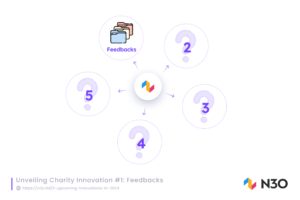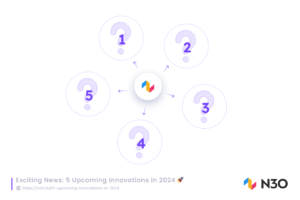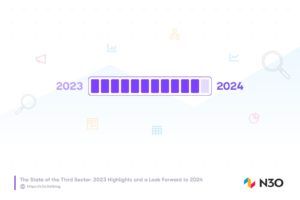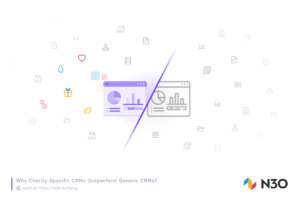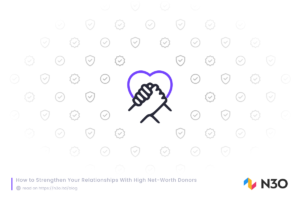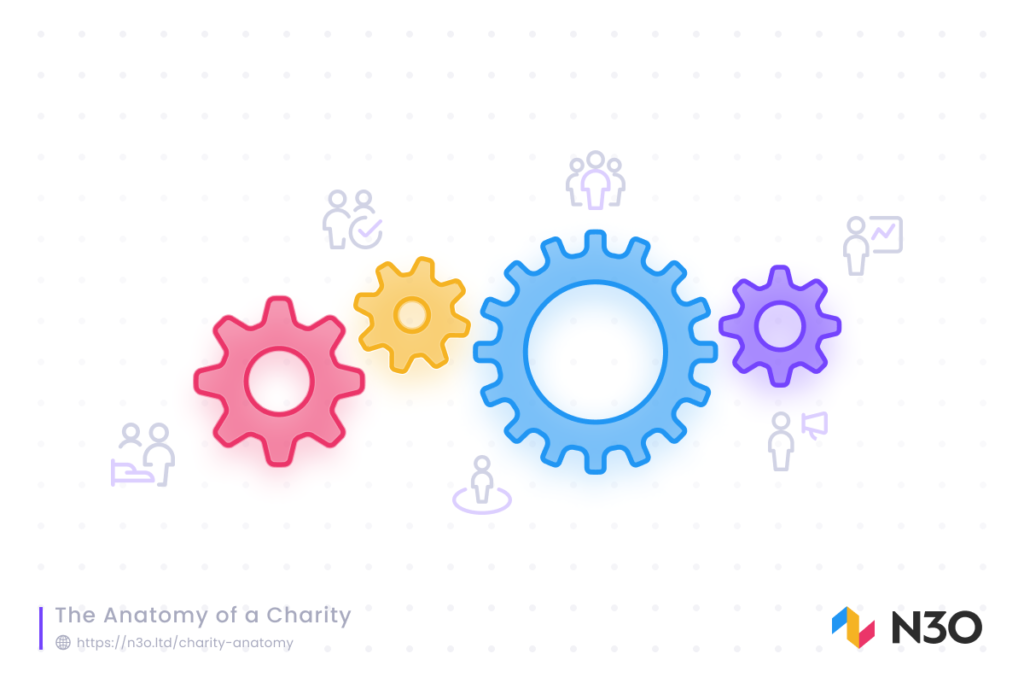
What charities do is no mystery. They receive donations and use it to help others. However, from the point someone hears of a charity’s projects to when beneficiaries are reached, a rich network of people, processes and systems are in swing to manage, allocate and protect funds, every step of the way.
Inside a charity, departments are tasked with distinctive roles in this process and each team is often made up of staff with very differing skills sets. The success of a cohesive and strong organisation lies in all the cogs working together towards a mutual goal.
Here, we look at the departments which make up a typical charity, what they do and how the journey of a donation—from funds in to funds out—plays out.
To begin, most charities can be organised into 3 divisions:
- Fundraising
- Administration
- Programmes
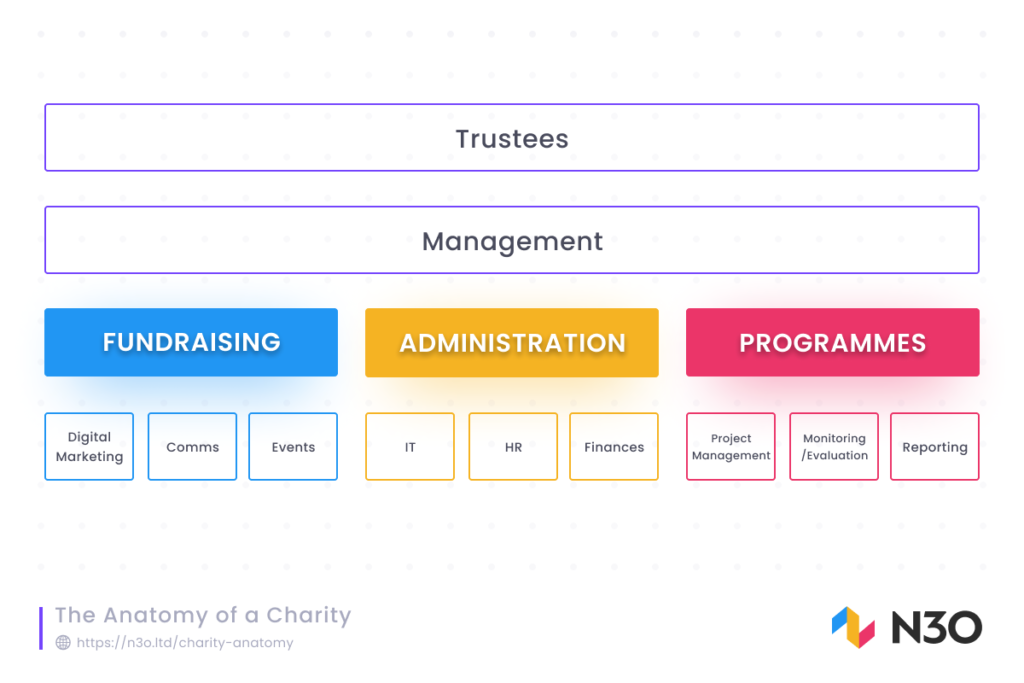
Each of these aspects of your organisation should be underpinned by a system and these systems must, as a necessity, be connected.
(For charities, the Fundraising, Finance and Programmes departments require tailor-made systems to serve bespoke needs. Other aspects of a charity’s administration such as IT and HR are already typically well served by existing industry-standard systems)
The simple example of collecting a donation from the public and distributing it to beneficiaries involves multiple departments working together:
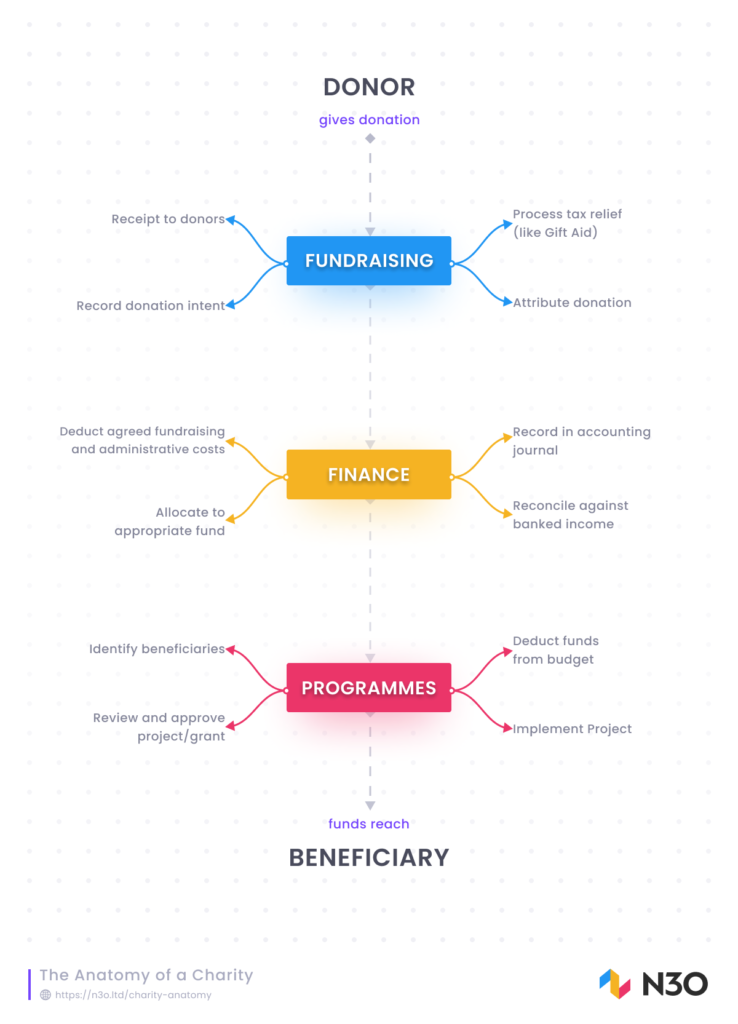
This is a highly simplified overview of the process involved when a single donation is made. When your charity is processing donations in the hundreds, then one can imagine the difficulties managing this information brings, and the hurdles that must be overcome.
When you look to your own charity, one must ask: Does your organisation have systems underpinning each of these functions, and more importantly—are they interconnected?
For many organisations, the answer is often no.
Many charities will often have some kind of CRM handling simpler aspects of donation processing but are often entirely lacking when it comes to charity-specific elements like fund management and the rest of the life cycle shown above.
This not only means that there is a break in the chain of funds, but also that few staff are stakeholders in the system. When use of the system is reduced to the remit of only a few, the majority of staff are left unaware of important aspects of how the charity is run and worse, how their role within the organisation could be dramatically enhanced by an intuitive, tailored system they regularly use.
What should effective systems be doing?
Your Fundraising system should help:
- Manage donors
- Process donations
- Provide receipts
- Manage pledges
- Maintain sponsorships
- Manage tax relief such as Gift Aid
Your Finance system should help:
- Ensure finance processes are followed
- Manage cash flow
- Reconcile income
- Provide fund availability
- Manage budgets
- Respect fund restrictions
Your Programmes systems should help:
- Manage projects and beneficiaries
- Keep track of available funds
- Monitor and evaluate projects
- Manage risk & ensure strong due diligence
- Manage feedback/reporting to donors
- Issue grants/requisitions
Whatever your role within a charity—from trustee, department manager or junior assistant—there is a lot to think about when it comes to how your organisation can utilise tech systems to help you work more efficiently and enable your charity to grow faster and stronger. Strong systems are the foundation of strong charities, so be sure your great work is supported to reach its full potential.

